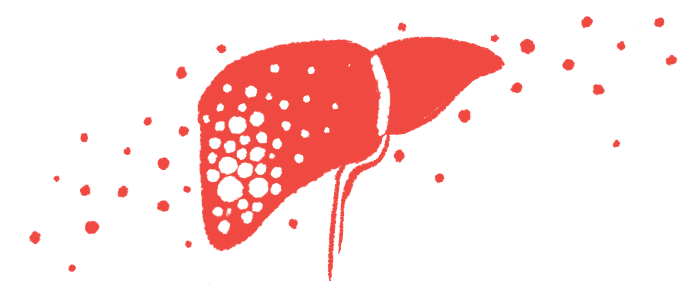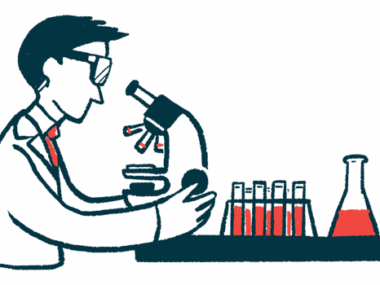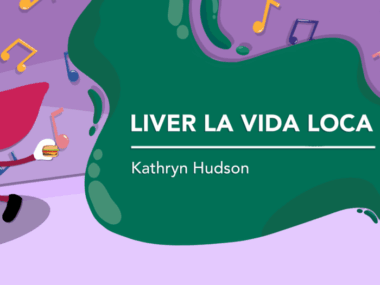Fatty liver disease linked to projected rise in liver cancer
Obesity, alcohol consumption believed to fuel future increases
Written by |

The proportion of cases of hepatocellular carcinoma (HCC) attributable to fatty liver disease is set to rise in the next 25 years, with obesity and alcohol consumption as the main modifiable risk factors, a study shows.
Chronic viral hepatitis, particularly hepatitis B and C, will remain the main cause of HCC in 2050, but the proportion of cases due to viral hepatitis is expected to fall before then. HCC is the most common form of liver cancer.
“Liver cancer was once thought to occur mainly in patients with viral hepatitis or alcohol-related liver disease, said Hashem B. El-Serag, MD, a study author at Baylor College of Medicine, in Houston, said in a press release. “However, today rising rates of obesity are an increasing risk factor for liver cancer, primarily due to the increase in cases of excess fat around the liver.”
At least 60% of liver cancers could be prevented by targeting modifiable risk factors of HCC, including obesity, alcohol intake, and viral infections, the researchers said.
“Compared with other cancers, liver cancer is very hard to treat, but has more distinct risk factors, which help define specific prevention strategies,” said Valérie Paradis, MD, PhD, a study author at Beaujon Hospital in France. “With joint and continuous efforts, we believe many liver cancer cases can be prevented and both the survival and quality of patients with liver cancer will be considerably improved.”
The study, “The Lancet Commission on addressing the global hepatocellular carcinoma burden: comprehensive strategies from prevention to treatment,” was published in The Lancet by a commission of experts in clinical medicine and public health.
Liver cancer is the third leading cause of cancer-related death in the world. HCC, which accounts for 80% of all cases, “is a highly lethal disease, with global five-year survival rates ranging from approximately 5% to 30%,” the researchers wrote.
How liver cancers are expected to increase
The commission was established to address the rising burden of liver cancers and conducted analyses to predict liver cancer burden and causes of HCC by 2050, as well as to identify preventable risk factors and preventive measures.
The number of new liver cancer cases is expected to increase from 870,000 in 2022 to 1.52 million in 2050, driven largely by population growth and aging.
“We risk seeing close to a doubling of cases and deaths from liver cancer over the next quarter of a century without urgent action to reverse this trend,” said Jian Zhou, MD, PhD, a study author at Fudan University in China.
The researchers predicted a particular rise in the number of HCC cases due to forms of fatty liver disease, including metabolic dysfunction-associated steatotic liver disease (MASLD) and alcohol-related liver disease. In MASLD, which affects more than 30% of the general population, there’s an accumulation of liver fat associated with obesity, diabetes, and/or high blood pressure. In severe cases, it can progress to metabolic dysfunction-associated steatohepatitis (MASH), where liver inflammation and scarring can set the stage for liver cancer.
MASH accounted for about 8% of all HCC cases in 2022, and this number is estimated to increase to 10.8% by 2050 — representing the greatest estimated increase, by 35%. Over the next decade, this increase in MASH-related liver cancer will particularly be seen in the U.S., Europe, and Asia, and go hand in hand with increased rates of obesity. In the U.S., MASLD is estimated to affect more than half of adults by 2040.
Alcohol-related liver disease is associated with alcohol consumption. It leads at first to excess liver fat that can eventually cause liver cancer. The proportion of HCC cases attributable to alcohol consumption will increase from 18.8% in 2022 to 21.1% in 2050.
Chronic hepatitis B and hepatitis C, two forms of viral hepatitis that cause liver inflammation, are expected to remain the most common causes of HCC for the next 25 years. However, the proportion of cases due to viral hepatitis will likely decline — from 39% in 2022 to 36.9% in 2050 for hepatitis B, and from 29.1% to 25.9% for hepatitis C.
“As 3 in 5 cases of liver cancer are linked to preventable risk factors, mostly viral hepatitis, alcohol and obesity, there is a huge opportunity for countries to target these risk factors, prevent cases of liver cancer and save lives,” said Stephen Chan, MD, a study author at the Chinese University of Hong Kong.
Because MASLD-related liver cancer is on the rise, interventions that target obesity may be especially important in the coming years.
“One approach to identify patients at high risk of liver cancer would be to introduce screening for liver damage into routine healthcare practice for patients at high risk of MASLD, such as individuals living with obesity, diabetes, and cardiovascular disease,” El-Serag said. “Healthcare professionals should also integrate lifestyle counseling into routine care to support patients to transition to a healthy diet and regular physical activity. Furthermore, policy makers must promote healthy food environments via policies such as sugar taxes and clear labeling on products with high fat, salt, and/or sugar.”







